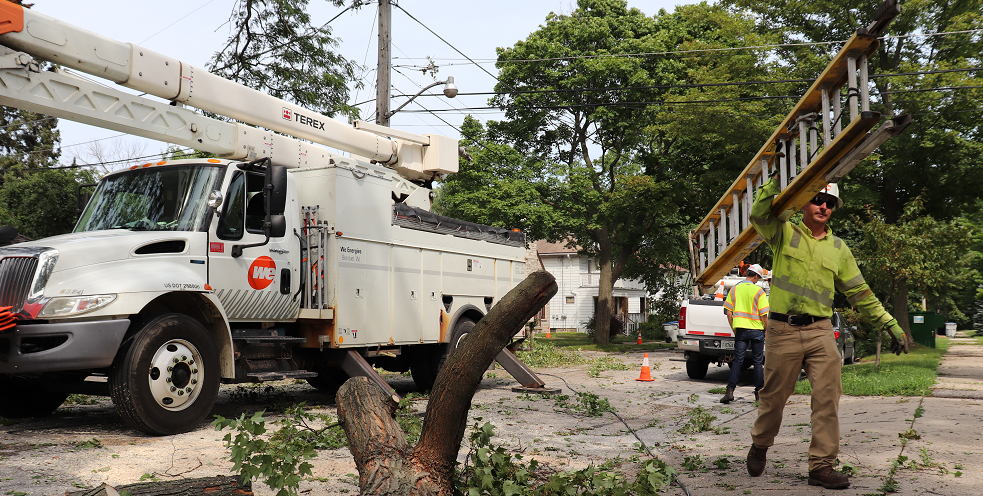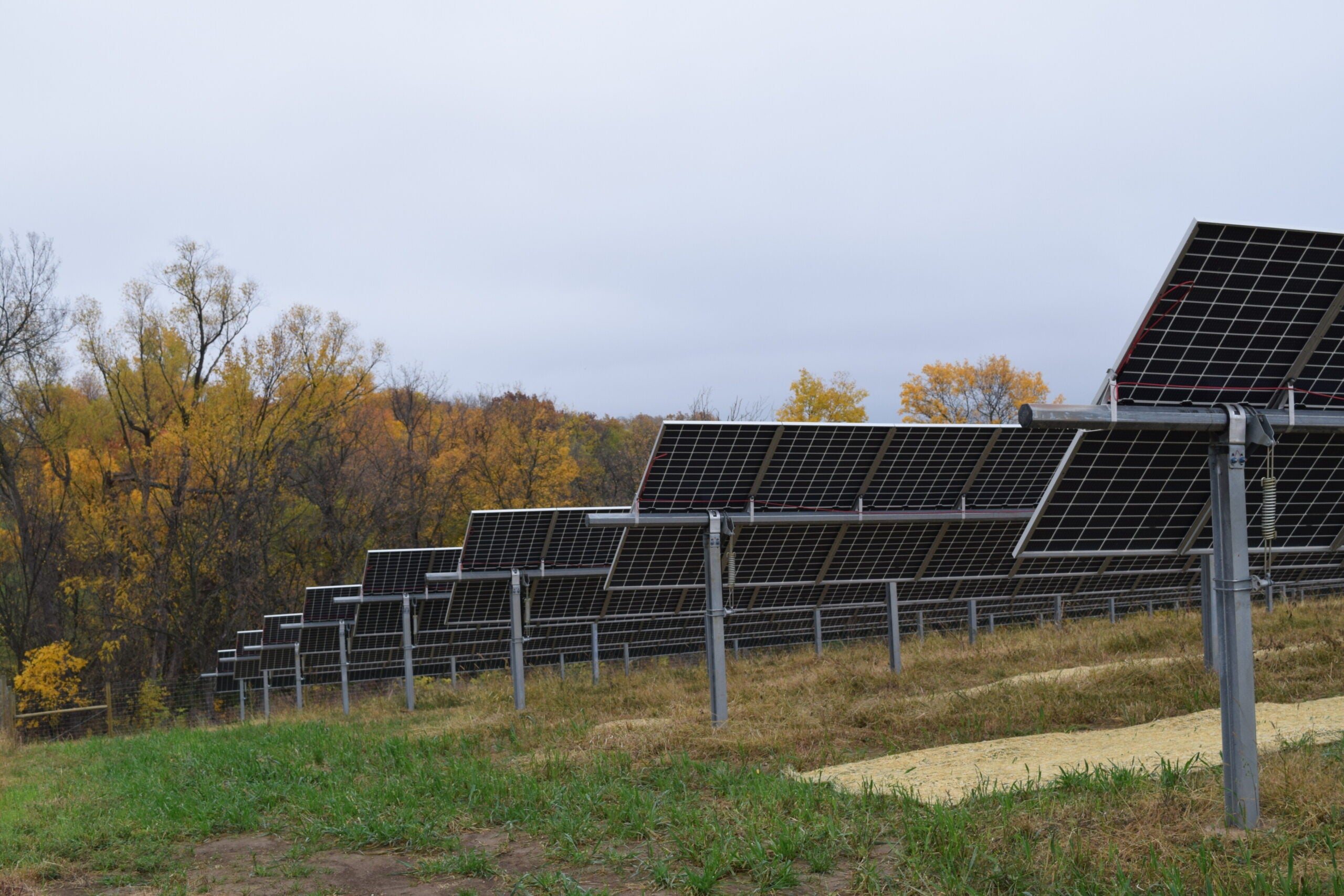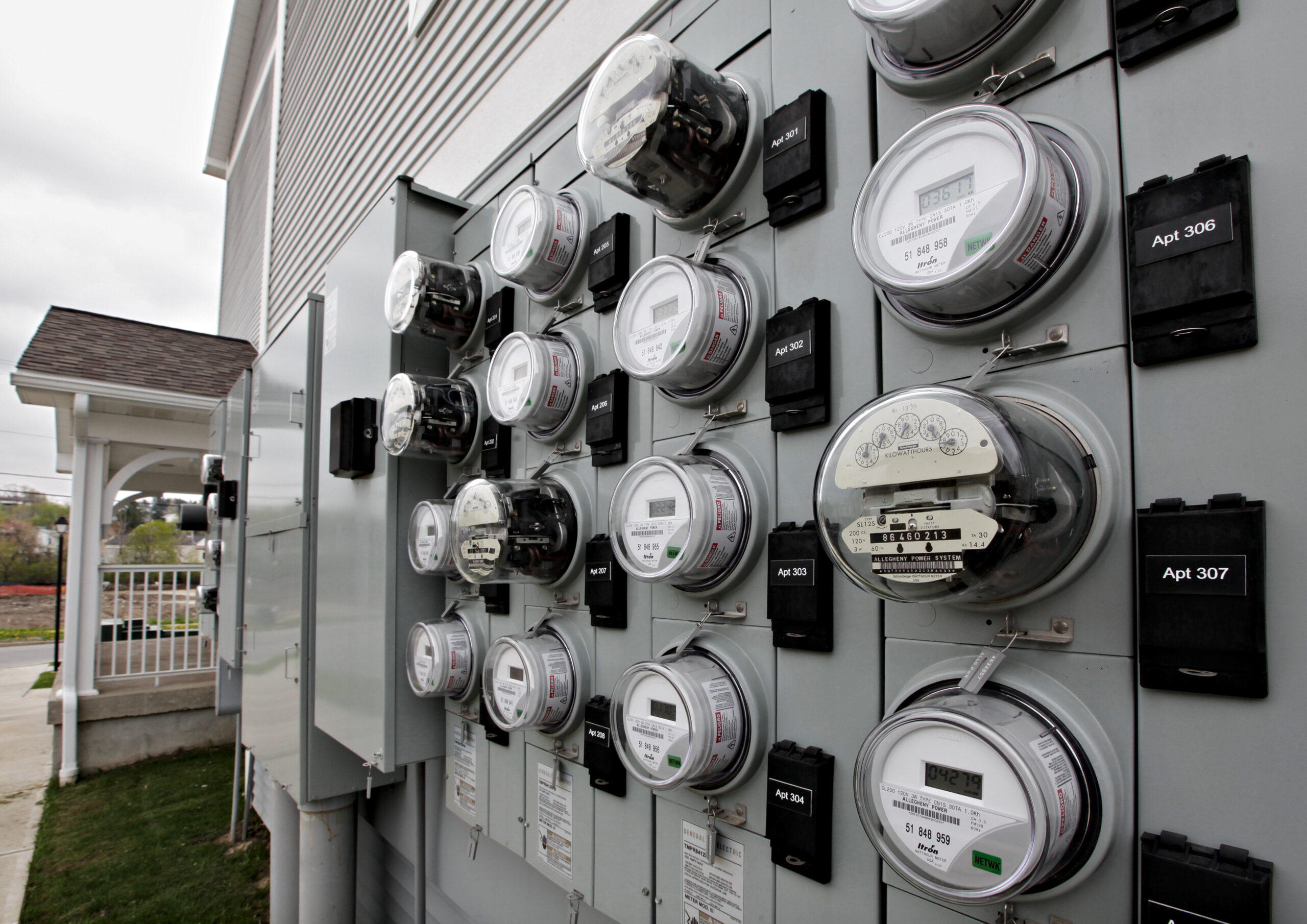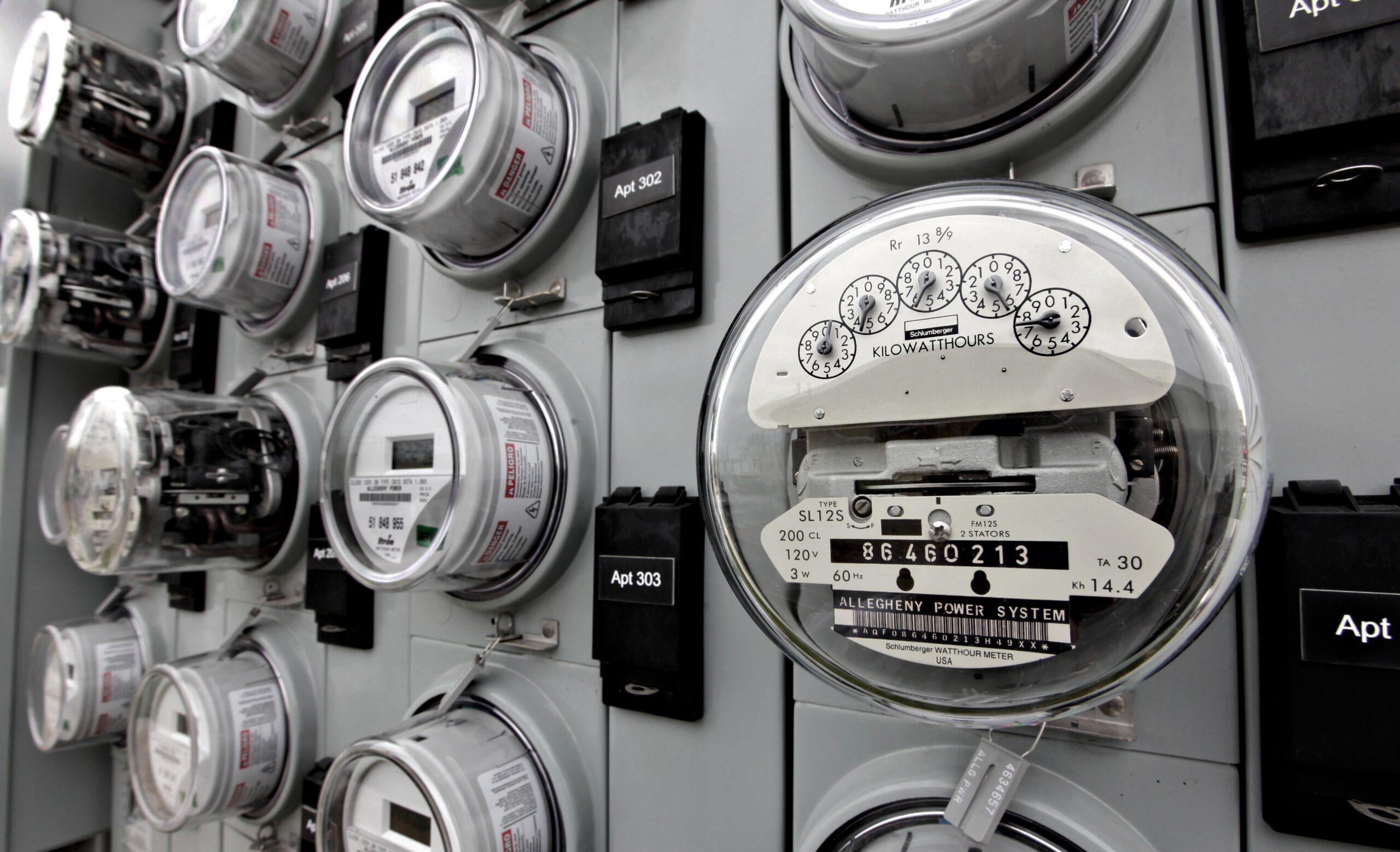Wisconsin’s largest electric utility plans to ramp up its efforts to prevent storm-related outages after seeing an uptick in those events in recent years.
This summer has already seen an active storm season in Wisconsin, and last month was one of the wettest Junes in state history.
Over the last two decades, the frequency of outages has gradually declined but the length of the outages has increased, according to a new draft report from the state Public Service Commission.
News with a little more humanity
WPR’s “Wisconsin Today” newsletter keeps you connected to the state you love without feeling overwhelmed. No paywall. No agenda. No corporate filter.
We Energies has seen an increase in the intensity and frequency of severe weather events resulting in widespread outages across its service territory. In 2021, some 200,000 We Energies customers lost power after a storm and another outage this January knocked power out for 233,000 customers, according to a recent filing with regulators.
Since 2020, We Energies spokesperson Brendan Conway said the company has tracked at least eight significant outage events in which more than 100,000 customers lost power. In the 43 years prior, he said the utility had six such outages.
“We’re seeing stronger winds, more severe weather, and it’s causing much larger outages than we’ve seen in the past,” Conway said.
In response, the utility has proposed spending more than $90 million over the next two years on forestry efforts that would remove hazardous trees, trim limbs in danger of falling on electrical equipment and remove the top portion of dead trees near distribution lines. The company estimates that it has around $19 million in its 2024 budget allocated to forestry.
Additionally, We Energies wants to spend another $106 million over the next two years to bury overhead power lines and upgrade equipment to isolate outages and increase automation of its distribution system. Conway estimates 45 percent of the utility’s lines are already underground.
Both of those efforts are part of the utility’s latest proposed rate increase, which still has to be approved by the PSC.
“These are significant investments that we’re making in reliability,” Conway said. “There is cost savings to all of this as well. Every large outage event, really every outage event, costs money to fix.”
While We Energies has framed the $196 million proposal as necessary to ensure grid reliability, critics have expressed concern about the size of the request.
Tom Content, executive director of the Citizens Utility Board of Wisconsin, said regulators should take a close look for possible cost savings.
“It’s clear that the storms have gotten more intense, and we certainly recognize that,” he said. “But the devil’s always in the details in terms of how much is gonna be warranted in terms of an increase.”
Content estimates that We Energies’ requested rate increase would translate into a 18.5 percent increase for residential customers over two years.
“The compound effect of the two increases is the fact that customers just experienced a double digit increase,” Content said. “The impact is really increasing customers’ bills by almost a third in just a span of three to four years.”
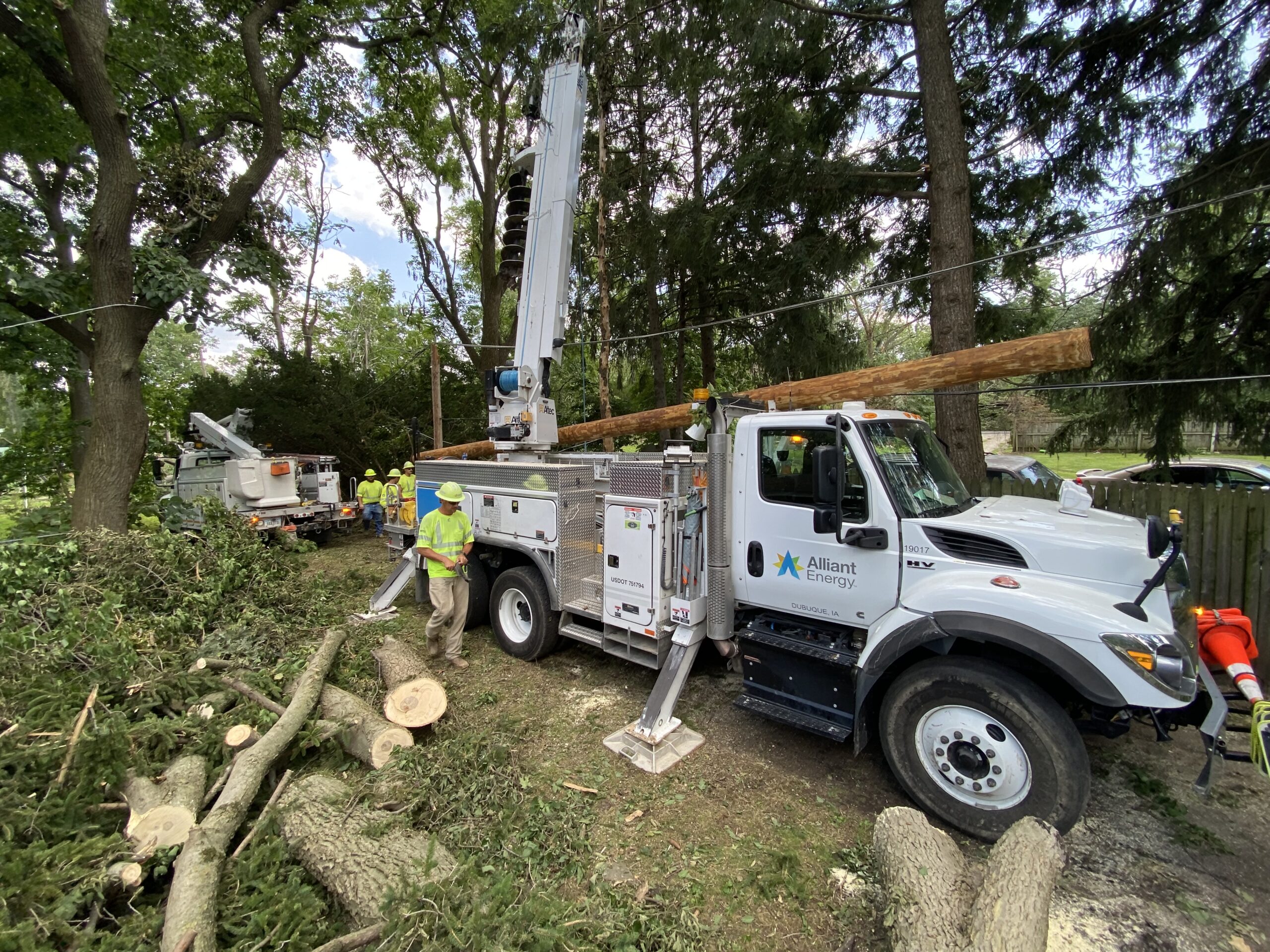
What are other utilities doing?
We Energies isn’t the only utility trying to prevent storm-related outages.
Alliant Energy estimates it spends about $50 million annually on burying and replacing aging power lines, and around $6 million to $7 million annually on tree trimming.
From 2021 to 2023, the utility averaged three major outages per year, but there have already been four in 2024, according to spokesperson Tony Palese.
Ron Graber, director of operational resources at Alliant Energy, said roughly 7,000 miles of the company’s roughly 22,000 miles of distribution lines are underground. When lines are moved underground, he said the company sees “about 15 times fewer outages.”
“We’ve got quite a bit of our system yet to replace to remove more of that overhead line,” he said. “When we do any construction, at least for the last couple of years, at least 95 percent of it is undergrounding. We’re not doing a lot of new overhead rebuilds.”
American Transmission Co., Wisconsin’s largest transmission utility, also prepares for storms but goes about it a little differently.
Tom Finco, senior vice president of systems and security integration, said burying power lines is less common for the transmission company. ATC’s power lines are about 4 to 5 inches thick, whereas electric generating utilities’ lines have the diameter of roughly a quarter or 50-cent piece, he said.
“If you look at our system as a whole, we’re roughly 10,000 miles of line, about 70 miles (are) underground,” Finco said.
ATC performs routine vegetation management and trimming hazardous trees on its more than 10,000 miles of power lines roughly every five to six years, according to a spokesperson. Annually, ATC manages vegetation on anywhere between 1,500 to 2,200 miles of lines.
“It’s not only doing veg (management) to make sure that the trees are cleared away from the lines,” Finco said. “It’s also managing the next four- or five-year look ahead to ensure that even over that time period, before we would come back and do more veg work, that there’s appropriate clearances around the assets to make sure that vegetation doesn’t create a challenge.”
Editor’s note: Alliant Energy, American Transmission Co. and the Citizens Utility Board of Wisconsin are sponsors of Wisconsin Public Radio.
Wisconsin Public Radio, © Copyright 2025, Board of Regents of the University of Wisconsin System and Wisconsin Educational Communications Board.

